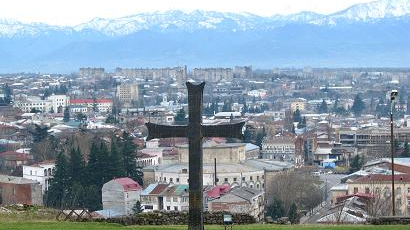Agreement signed: 6 July 2009
Range of cooperation: public administration, tourism, education, culture.
Population: 190 thousand inhabitants
Location: The city is the capital of the western region of Imereti. It is 221 km to the west of Tbilisi.
Information about the city:The city is the capital of the western region of Imereti. It is 221 km to the west of Tbilisi.
In 2010 the permanent resident population reached 192.500.
Kutaisi was the capital of the ancient Kingdom of Colchis, where a hero of Greek mythology - Jason and the Argonauts came on a quest for the Golden Fleece, facing three trials from King Aeetes.
Before Georgia's independence in 1991, followed by the country's economic collapse, Kutaisi was a major industrial center. Kutaisi is one of the most important educational and scientific centers in Georgia, hosting the Gelati Academy of Sciences, established in the 12th century by King David IV. There are numerous universities, institutes, colleges and schools. The landmark of the city is the ruined Bagrati Cathedral, built by Bagrat III, king of Georgia, in the early 11th century. The Bagrati Cathedral and the Gelati Monastery a few kilometers east of the city, are UNESCO World Heritage Sites. Kutaisi is located along both banks of the Rioni River. The city lies at an elevation of 125-300 meters (410-984 feet) above sea level.
Besides the monasteries there are many interesting places in Kutaisi, such as: Sataplia Cave, where one can observe footprints of Dinosaurs; Geguti Palace, which was one of the residences of Georgian monarchs; "Okros Chardakhi" - Georgian Kings' Palace; and the Pantheon, where many notable citizens are buried.
Related links:
